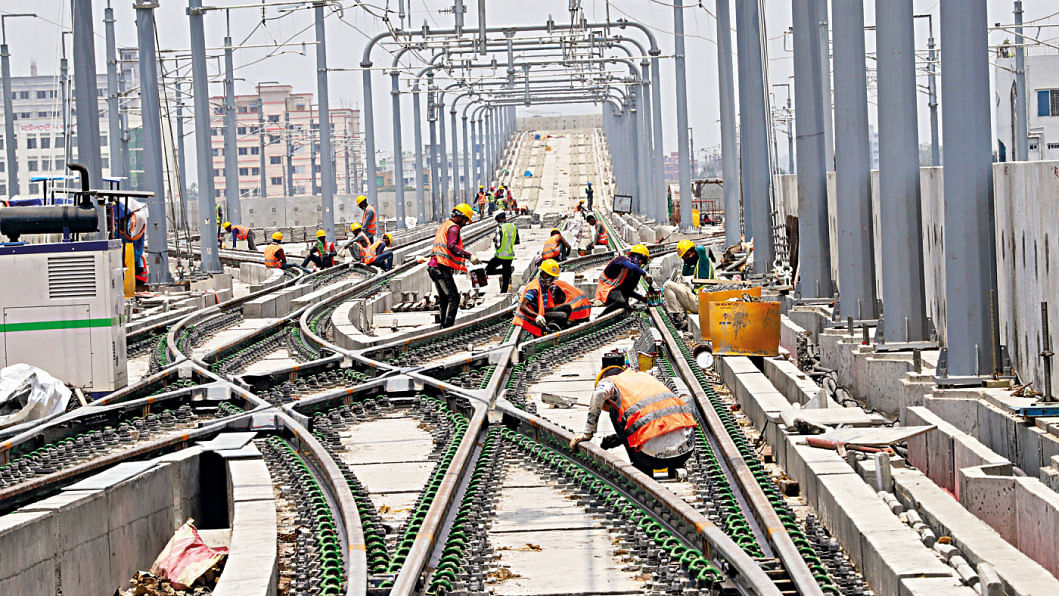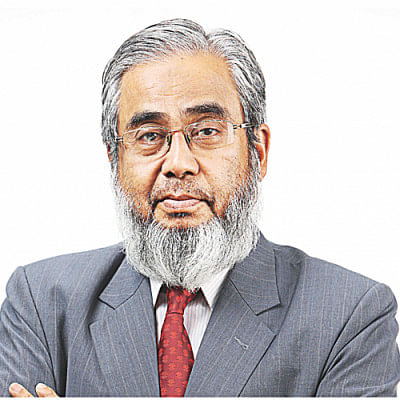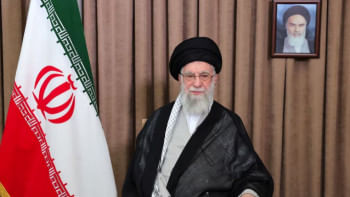“The project as a whole is quite sound technically”

The Daily Star (TDS): The MRT service is expected to save city dwellers from the menace of traffic congestion, improving the overall traffic situation of the city. How do you perceive the project's impact?

Prof. Dr. Shamim Z. Bosunia (SZB): There is no doubt that the MRT service is essential in large cities and can help to alleviate traffic congestion. Dhaka's congestion is particularly severe, unlike anything seen in other parts of the world. If the MRT service is implemented successfully as planned, it has the potential to significantly improve the traffic situation in the city. However, based on the current situation, I am not optimistic that it will make a positive difference.
The MRT route from Diabari to Agargaon has faced challenges in obtaining permission. Some sections of the route pass through congested areas, and some stations pose risks. For example, the Kawran Bazar station requires passengers to disembark on a busy footpath, which will likely become even more crowded once the MRT service begins. When the project is completed up to Kamalapur Station, it is expected to be the busiest station of all, serving the largest number of passengers.
I have seen stations in other countries that were built far from main roads due to space constraints and use overpasses to transport passengers. I am not sure if this approach would have been possible in our country due to location challenges. As the head of the panel of experts for this project, I was only consulted for problem-solving purposes and not involved in the decision-making process.
There is a plan to station 50 buses at Agargaon station for passengers to continue their commute. This will be especially beneficial for those coming from Uttara, but may not be practical for those traveling to Motijheel from there as they will not be able to board running buses. To address this, additional buses will be available in that area, though it is unclear where they will be stationed. It might have been more effective to test this approach on a trial basis before implementing it.
TDS: During the completion of the project, what technical challenges arose and how much of it could be addressed?
SZB: As one of the largest projects in the country, we did encounter many challenges. Given that we could not address all of them at once, we prioritized them. The most significant technical challenge arose when the alignment of MRT Line 6 deviated from the original route, which was supposed to go through the eastern side of the assembly building and continue to Farmgate via Bijoy Smaroni intersection. However, objections from certain quarter prevented us from following this plan.
After that, on the assembly building's east side road, two pillars were built with a bigger span. The other spans are only 38m, smaller than these two. The route then goes through the Khejurbagan road and crosses Manik Mia avenue joint, making this whole trajectory very risky from an engineer's point of view. The train will have to slow down there- which still remains a big challenge. If it goes with a high speed, there is a chance that it will fall upside down. The same criticality arises when the train takes its turn in Farmgate once more. The span has increased and so has the curvature- which is deadly.
Another challenge remains regarding the stations in congested areas. The Agargaon station is fantastic, even the Farmgate station is being built beautifully. But the other ones, especially the next one at Kawran Bazar is questionable. Proper steps could have been taken regarding this, keeping the station a bit far away. In the current plan, the passengers are expected to disembark on the footpath, which is crowded and narrow as it is.
TDS: How do you evaluate the project from the technical aspects? Do you think that the project is technically sound?
SZB: Given the technological aspects, once it is completed, it will undoubtedly help the population. However, I'm unsure of how it will cover such a large volume with just one line at this time, since millions of people travel every day. How much time will it take them to board the train? And I have no idea how the stations will serve such a large population with an appropriate time interval. However, I am confident that this service will be extensively used.
The project as a whole is quite sound technically. The ability to sustain frequency and continuous electricity are primarily required here. It is clear that the frequency, which refers to the number of times the train can travel the complete route, must be effective. Otherwise, due to a lack of available space, passengers will be standing in the station for an extended period of time without being able to board.
The span is 38 meters, which is fairly sufficient for supporting the weight of the train as well as the passengers. Integrated tests were also carried out to determine whether or not the entire system, which is comprised of 17–18 distinct types of services, is capable of working and functioning without any passengers present. I am happy to report that all of the testing went off without a hitch, and the tracks are looking better than ever.
TDS: What were the learnings from the MRT Line-6 project? And what should the following steps be to ensure a more efficient and smooth completion of the rest of the lines?
SZB: I agree that there has been a delay, and it is only natural that as a result, the expenses associated with the project have also increased.
If you ask me about the learnings, I'd want to emphasize how important it is to have spacious stations. A transport survey is one of the initial phases in planning any route in traffic engineering. So, conducting proper transportation and population surveys could be another lesson learned from this endeavor. A poll should be conducted to determine how many people would utilize a given station. There may be almost a hundred passengers leaving if you take into account the station right before Diabari, which is the second-to-last stoppage. There is no use in building a massive station there. In contrast, I anticipate that Kawranbazaar station will see the most travelers. However, as I have previously indicated, the station is rather crowded there. Therefore, accurate surveys on these issues should be conducted.
The challenges this project faced were not particularly significant. The facilities and the factors of implementation worry me more. We won't know how the MRT service will continue to function effectively or how the entire system will operate smoothly until it commences.
Interviewed by Sarah Bintay Shakhawat, The Daily Star

 For all latest news, follow The Daily Star's Google News channel.
For all latest news, follow The Daily Star's Google News channel. 



Comments